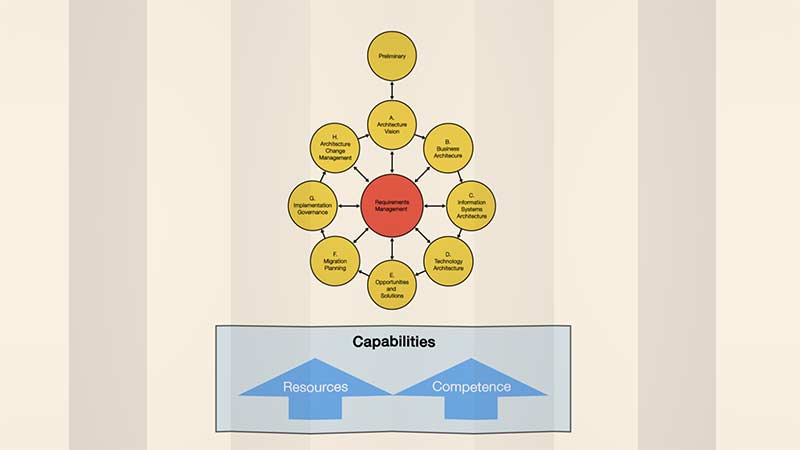In video 6 of the TOGAF Distilled series we introduced the Architecture Development Method or, ADM. This week's video takes a look at how the ADM is related to other parts of TOGAF.
As we highlighted last week. the ADM is the core of the TOGAF documentation and therefore all other parts of TOGAF are used in conjunction with the ADM.
ADM Pulling TOGAF together
The ADM is the process that pulls together the elements of TOGAF - as well as any other architectural assets - to meet the business and IT needs of an organization. The organization must have the Architecture Capability to support and operate the ADM – this is Part VII of TOGAF.
The business needs feed into the method, identifying problems to be addressed. ADM helps translate these business needs into an architectural understanding of the business vision, drivers and concerns. And it is the ADM that then delivers new business solutions, building Business Capabilities.
Guidelines, templates, checklists and techniques that support the ADM are described separately in Part III – they are referenced from the ADM, without the detailed text cluttering the ADM itself.
Following the ADM produces content – in the form of deliverables, artifacts and building blocks, and described in Part IV of TOGAF. Content is classified according to the Enterprise Continuum – which supports the leverage of relevant architecture assets during an ADM cycle. Content is managed by Tools such as an Architecture Repository. The Enterprise Continuum and Tools are both described in Part V of TOGAF.
Finally - Reference Models populate the Enterprise Continuum. They can really speed up and improve the process of creating an enterprise-specific architecture, and TOGAF defines two Reference Models in Part VI.
To recap on the TOGAF Distilled Video series or to check out our other video series, subscribe to our free YouTube Video Channel here.




.png)


